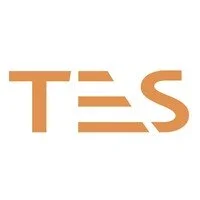AOD HS Hand Signaller
Initial / Recert
Course Summary
This course is designed to train persons who are responsible for undertaking this Course as part of their duties on Network Rail Infrastructure.
It is designed to develop a person’s knowledge, understanding and skills and is therefore particularly suited to persons required to prove their capability in these areas.
Course Aim
The aim of this course is to provide delegates with the skills and underpinning knowledge required to undertake their duties as Handsignaller.
Pre-requisites & Requirements
Additional Information
Full PPE Required:
All PPE must meet the requirements of NR/L2/OHS/21 and RIS-3279-TOM and as a minimum be equipped with:-
High visibility upper body clothing with reflective tape, with Sentinel Sponsor Logo
High visibility lower body clothing with reflective tape
A safety helmet with Sentinel Sponsor Logo
Safety footwear to support ankle and protective toe cap
Suitable safety eyewear
Suitable safety gloves
What Does a Hand Signaller Do?
The Hand Signaller is a crucial competence for ensuring safety and managing train movements within a specific area, especially during maintenance or engineering works when fixed signals are out of use or need to be overridden. They act as the "eyes and voice" of the Signaller on the ground, directing trains with clear, prescribed hand signals.
What is a Hand Signaller?
A Hand Signaller is a trained and competent individual authorised to control train movements using specific hand signals. They work under the direct instruction of the Signaller (or a PICOP/PC in some cases) and are essential for guiding trains safely through work sites, past temporary blockages, or into/out of sidings where normal signalling may not apply. They bridge the gap between fixed infrastructure signals and on-the-ground human control.
Key Duties and Responsibilities of a Hand Signaller:
The Hand Signaller's role demands precision, constant vigilance, and clear communication. Their duties include:
Understanding Instructions: Receiving and fully comprehending instructions from the Signaller, PICOP, or Protection Controller regarding train movements.
Operating Hand Signals: Using the correct, prescribed hand signals clearly and unambiguously to communicate with train drivers (e.g., stop, proceed slowly, draw forward).
Observing Train Movements: Constantly observing approaching and departing trains, ensuring they follow the signals given.
Monitoring the Line: Checking that the line is clear and safe for the intended train movement before giving a 'proceed' signal.
Communicating with Drivers: Ensuring visual contact with drivers and acknowledging their responses.
Protecting Work Sites: In some scenarios, Hand Signallers may work in conjunction with a COSS to provide an additional layer of protection for work groups by stopping trains outside a work area.
Reporting: Reporting back to the instructing person (Signaller/PICOP/PC) upon completion of train movements or any abnormal occurrences.
Equipment Management: Ensuring signalling equipment (flags, lamps) is correctly used and maintained.
Where a Hand Signaller can work within TES:
The Hand Signaller competence is valuable across various operational departments within TES, particularly where direct control of train movements is required on site:
Permanent Way (P-Way): Often deployed during track renewals or maintenance when sections of track are isolated, and material trains or on-track machines need to be moved precisely within the work site.
Electrification (OLE / 3rd Rail): Guiding engineering trains or road-rail vehicles safely within electrified areas, ensuring they adhere to safety clearances.
Possession Management: A critical asset during large possessions, where multiple trains or on-track machines might be moving within a controlled area, requiring precise manual direction.
Technical Services: Supporting complex installations or repairs that require controlled access for rail-mounted equipment.
Project Delivery Teams: Ensuring safe and efficient movement of resources on site for various infrastructure projects.
Let’s Learn Together
Interested in our NSAR Gold Standard team training your staff?
Fill out some info and we will be in touch shortly!
We can't wait to hear from you!
Explore more of TES
Want to explore more of what TES have to offer? Use the search function below

